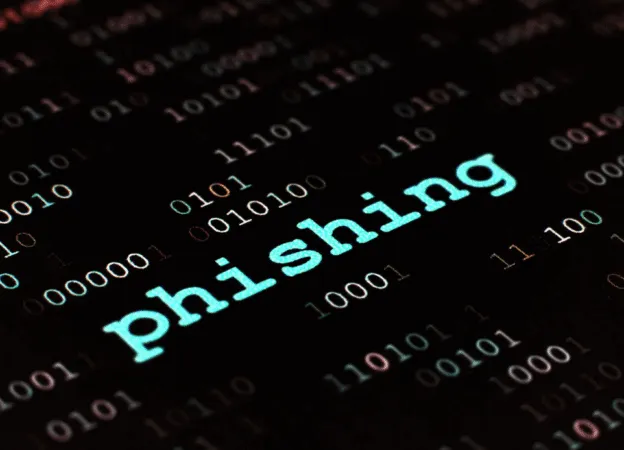In a world where artificial intelligence (AI) effortlessly crafts articles, stories, and reports, we’ve stumbled upon a double-edged sword. On one hand, the marvel of AI simplifies content creation, transforming blank pages into engaging narratives within seconds.
Table of Contents
Yet, this convenience bears a shadow—plagiarism and the uncredited use of AI-generated texts are on the rise, challenging our commitment to originality and integrity. There are ways, however, to discern AI-crafted content and plagiarism, ensuring our digital footprints are both genuine and respectful of creators’ rights.

Let’s take a look at the steps to help you detect AI-written content and plagiarism.
The AI Writing Phenomenon
AI writing isn’t just a fleeting trend—it’s a profound shift in how we think about content creation.
Unlike humans, AI tools produce content that, while impressive, often lacks the warmth of personal experience or the subtle nuances that come from a lifetime of unique encounters. AI-generated texts tend to follow a predictable structure, may repeat ideas, and usually miss the creative spark that ignites human writing.

The Evolution of AI Companions
Remember the days when AI could barely string a coherent sentence together? Those times are long gone.
Today’s AI writing assistants craft entire essays, reports, and even novels, thanks to leaps in natural language processing and machine learning. These tools don’t just mimic human writing; they learn from it, evolving with every sentence they generate.
Unveiling AI’s Veil: Detection Techniques
In today’s digital deluge, distinguishing between the creations of AI and those of human origin is becoming increasingly complex. AI’s ability to mimic human writing has advanced to the point where it can produce content that’s nearly indistinguishable from that of a human author. On the other hand, AI is not ideal in writing and, quite often, it makes grammar and spelling errors while writing. To ensure, that your writing is good, lots of people prefer using a plagiarism detector.
Fortunately, amidst this sea of digital content, innovative detection techniques are emerging. The creation of the AI detector represents a significant leap forward in this ongoing game of digital cat and mouse.
Stylometric Analysis: Unraveling the Writing Fingerprint
AI tends to leave behind subtle clues in its writing—a certain rigidity in sentence structure, a preference for specific types of words, or a lack of varied punctuation. By mapping these patterns and comparing them to the rich tapestry of human writing, we can often detect the mechanical pulse of AI-generated content.
It’s not just about what is written, but how it’s written—the rhythm, the flow, the pauses. This analysis is particularly powerful because it captures the essence of a writer’s unique voice, something AI, despite its sophistication, struggles to mimic perfectly.
Machine Learning Classifiers: The Savvy Pattern Hunters
Machine learning classifiers are the modern-day Sherlock Holmes of the digital world. They are trained on enormous datasets of human writing, from poetry to scientific papers, absorbing the nuances that make our writing distinctively human.
These tools are incredibly adept at sifting through the sea of words to find those telltale signs: unnatural phrasing, overuse of certain sentence structures, or even a lack of the subtle errors that humans naturally make.
Linguistic Inquiry: The Meticulous Grammar Gurus
In the domain of linguistic inquiry, every word and sentence is a clue waiting to be unraveled. This technique is a forensic analysis of language.
Experts in this field examine content with a fine-toothed comb, looking at everything from syntax to semantics. They ask questions like: How complex are the sentences? Is the vocabulary diverse or limited? How are the words arranged to form meaning?
This method goes beyond the surface, probing into the depths of language usage. AI, for all its capabilities, often falls into certain linguistic patterns—overly formal structures, a tendency to avoid colloquialisms, or a lack of idiomatic expressions.
Plagiarism: The Age-Old Adversary in a Digital Guise
Plagiarism, the act of passing off another’s work as your own, has donned a new cloak in the digital era. It’s never been easier to copy and paste, but with this ease comes a greater responsibility to honor and attribute the original creators.
Whether it’s copying directly or mixing and matching from various sources without credit, plagiarism undermines the trust and respect foundational to creative work.

Tools of Integrity: Plagiarism Detectors
To safeguard against plagiarism, several tools stand ready. Turnitin, Grammarly, and Copyscape are but a few of the guardians at the gate, comparing submissions against a vast database of existing content to sniff out any overlap. They are the custodians of authenticity, ensuring that every word we write is scrutinized for its originality.
How to Detect AI-written Content – Conclusion
In our quest for authenticity in the digital realm, understanding and utilizing techniques to detect AI-generated content and plagiarism is crucial.
By embracing tools like the AI detector and plagiarism checkers, we not only ensure the content we consume and produce is genuine but also honor the creativity and hard work of all writers—human and AI alike. Let’s navigate this digital maze with both caution and respect, championing originality in every click and keystroke.
FAQ: How to Detect AI-written Content and Plagiarism
1. What is the AI Writing Phenomenon?
AI writing is a significant shift in content creation, where artificial intelligence tools generate articles, stories, and reports with remarkable speed. However, AI-generated content often lacks the personal touch and creativity inherent in human writing, making it identifiable through certain characteristics.
2. How has AI Writing Evolved?
From simple sentence construction to crafting entire essays and novels, AI writing has evolved tremendously, thanks to advancements in natural language processing and machine learning. An AI writing editor looks to learn and evolve with every piece of text it generates.
3. How can AI-generated Content be Detected?
Detecting AI-generated content involves various techniques, including stylometric analysis, machine learning classifiers, and linguistic inquiry. These methods analyze patterns in writing style, syntax, and language usage to distinguish between human and AI-generated content.
4. What is Stylometric Analysis?
Stylometric analysis involves identifying subtle clues in writing styles, such as sentence structure and word choice, to uncover the mechanical pulse of AI-generated content. It focuses on the unique rhythm and flow of human writing, which AI struggles to mimic accurately.
5. How do Machine Learning Classifiers Detect AI-written Content?
Machine learning classifiers analyze vast datasets of human writing to identify patterns that distinguish human from AI-generated content. They detect unnatural phrasing, overused sentence structures, and other indicators of AI involvement.
6. What is Linguistic Inquiry in Detecting AI-written Content?
Linguistic inquiry involves a forensic analysis of language, examining syntax, semantics, and linguistic patterns. It uncovers linguistic clues, such as formal structures and limited vocabulary, that AI tends to exhibit compared to human writing.
7. What is Plagiarism in the Digital Era?
Plagiarism involves passing off another’s work as one’s own, a practice facilitated by the ease of copying and pasting in the digital age. It undermines the integrity of creative work and requires vigilance to uphold originality and proper attribution.
8. How can Plagiarism be Detected?
Plagiarism detection tools like Turnitin, Grammarly, and Copyscape compare submitted content against extensive databases to identify any instances of overlap or similarity with existing content. These tools ensure the authenticity and integrity of written work.



